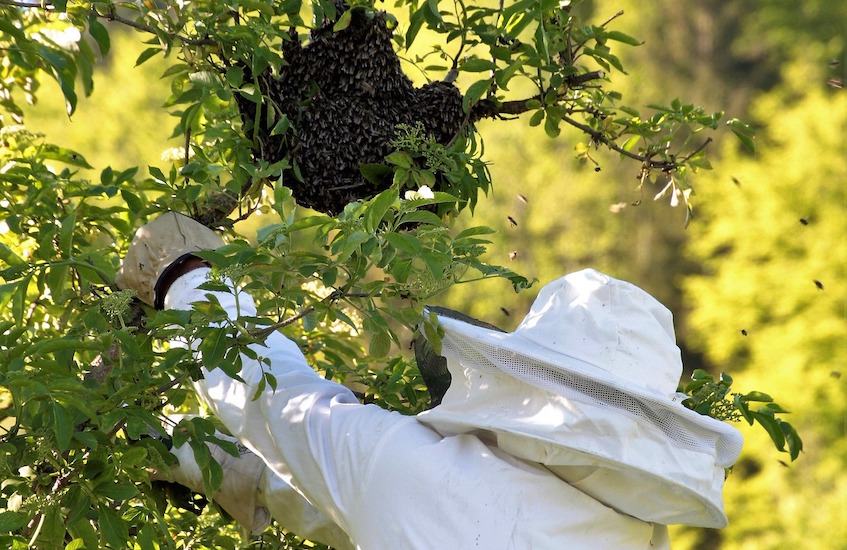
Honey bees can be spotted from spring through to autumn but as we enter the ‘swarming season’, the Jersey Beekeepers’ Association is providing advice to Islanders on what to do if they see a swarm.
‘Swarming honey bees is a natural phenomenon at this time of year,’ explains swarm coordinator John De Carteret, from the Jersey Beekeepers’ Association.
‘Beekeepers try to prevent this happening but being nature sometimes the bees have other ideas.’
Swarms usually happen on warm sunny days from April to June, with the first swarm in Jersey reported to the volunteer group on 22 April.
What to do if you see a swarm
Swarming occurs when the queen, accompanied by drones and several thousand worker bees, leaves its hive to look for a new nest site.
If you see a swarm in the air, it’s recommended to move away from the bees or go indoors and close any windows.
While scout bees are looking for a suitable nesting site, the swarm may settle in a tree or bush, and hang as a football sized cluster for up to a few days.
Who to contact
If you see large numbers of flying bees or a hanging swarm, contact your parish hall who will have a list of beekeeper volunteers who can help.
‘The aim is to recover them and potentially pass the swarm over to a new beekeeper,’ John explained.
‘Sometimes due to location, in a chimney for example, they cannot be recovered so alternative advice is given.’
You can also call the swarm coordinators to report a swarm: John De Carteret for eastern parishes (07797 715979) and Alasdair Christie for western parishes (07797 732009).
Swarm collectors are experienced members of the Jersey Beekeepers’ Association, are registered with the British Beekeepers’ Association, and are insured for carrying out beekeeping activities, both at their own apiaries and whilst collecting swarms.
For an identification guide to Jersey bees, visit the Jersey Biodiversity website: https://jerseybiodiversitycentre.org.je/sites/default/files/resources/school/Pollinator%20FIT%20Count%20JE%20Insect%20Guide.pdf




